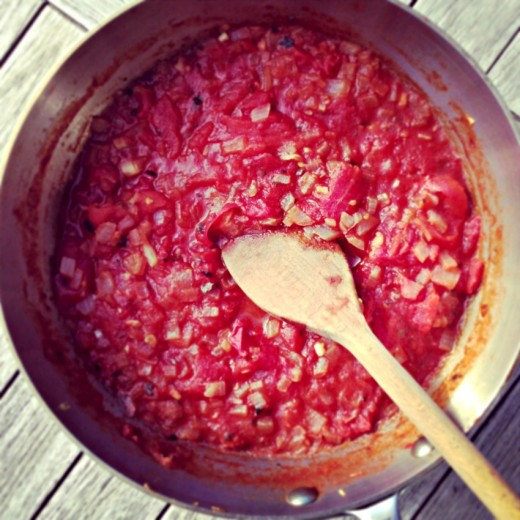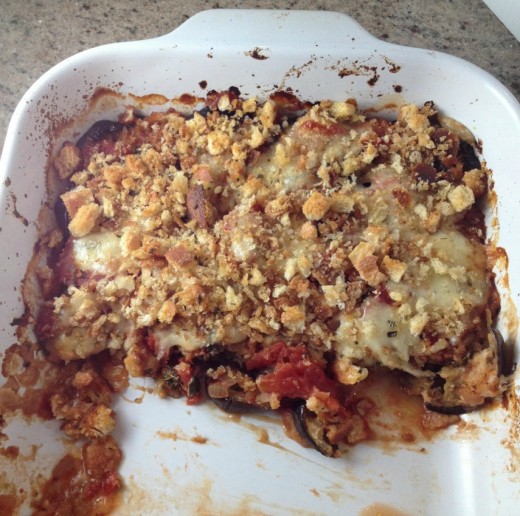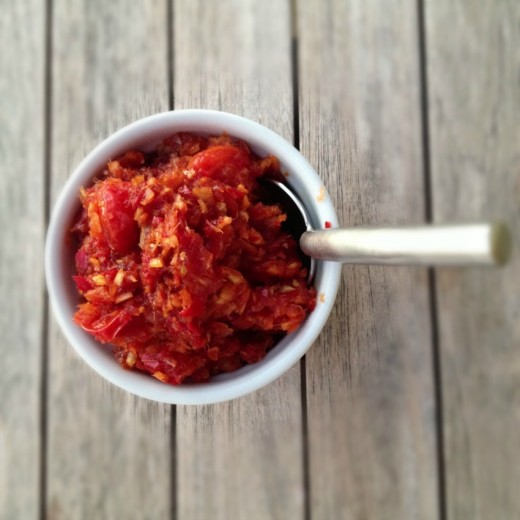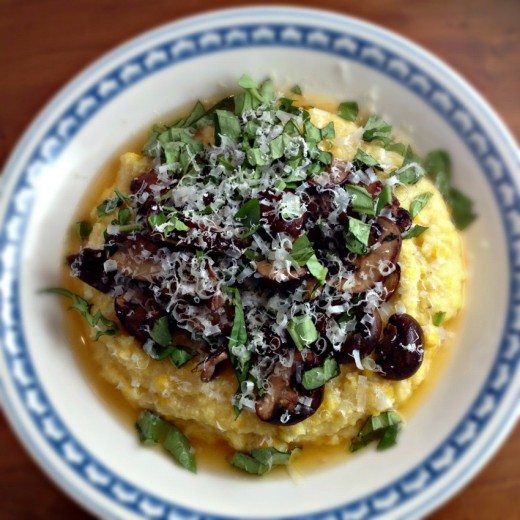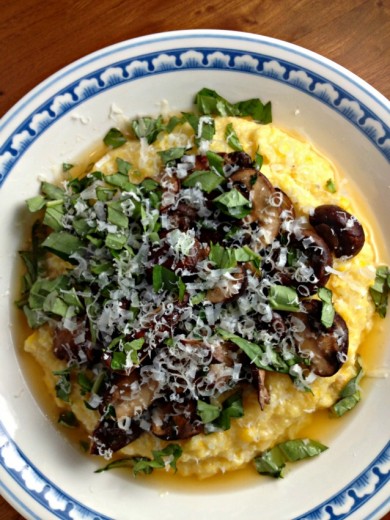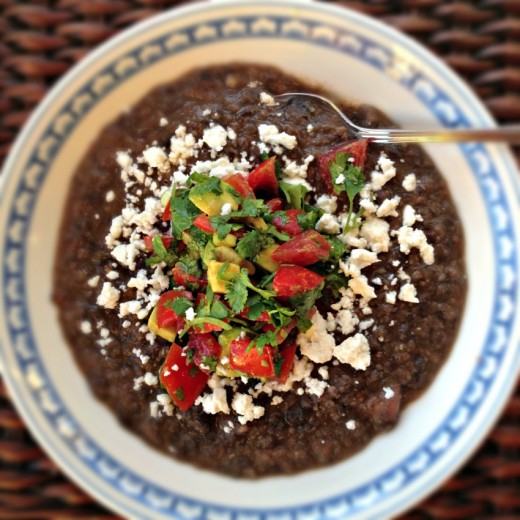Thank you for all your entries into my ActiFry giveaway! I’m so glad to hear that so many of you share my intense love of French fries. The winner, chosen at random, is Michelle who says, “French fries and Ben & Jerry’s Red Velvet Cake Ice cream. Have to have both sweet and salty or the craving for the other would drive me crazy! Acti-Fry come live at my house!” Congratulations Michelle!
On another note, I apologize that there is only one photo here. For some reason I am not able to upload photos in the way I have been doing it.
I go through phases in my cooking. Maybe you all do too. Sometimes, I am very book focused. I pay special attention to books I have been neglecting or those that are new to my collection. I challenge myself with fancy dishes, dinners that take an hour or more to pull together. Other times, I am wanting to cook from the most current issues of the magazines I receive. Up the minute perfectly seasonal dinners with on-trend ingredients. Sometimes I want to shop the farmers’ markets and let the produce I find there inspire me to search out new recipes from books or blogs that I trust and love. And other times, I just want to be surrounded by things I like and figure it all out as I go.
This last option is how I’ve been cooking lately. I know that much of the country is still in winter but Northern California is staring down the barrel of spring without really having had winter. A walk through an East Bay farmers’ market these days will reveal citrus, avocados, strawberries, cauliflower and broccoli, tons and tons of greens, winter squashes, radishes… the list goes on and on. It is inspiring to say the least. I just walked through picking up things that I like, handing over a few dollars here and there, and making up dishes as I went along. It was not precise or especially thought out.
So, with a big kabocha squash, a large head of cauliflower, some spring onions, and a bunch of other things I already had in my refrigerator or my pantry, I made three dinners. Three meals that were nothing ground breaking, but all three were healthy, tasty, and satisfying. I didn’t make multiple stops at the grocery store because I had already bought things I liked and just trusted that I would have enough to make good meals. It is important for me, when I am cooking this way, to have plenty of salad greens and other goodies for the salad bowl so that even if dinner turns out a little thin, we can enjoy a big salad.
First up, I had an eggplant left over from making Eggplant Parmesan. Eggplants keep surprisingly well and this one still felt firm and had no bruising. It had been a while since I last made polenta and I keep seeing notes on how best to cook it. The current thought is that you don’t have to stir it constantly and that the longer it sits, with an occasional stir, the creamier it gets. Once it has spent about a half hour over direct heat, you can move it to a double boiler and let it stay for an hour or more. I’ve always given my attention to polenta at the beginning of the cooking process and then more or less left it alone, but had never tried the double boiler method. I actually found that mine got a little dried out so I will need to tweak the amount of liquid next time I try it.
I love polenta just about any way but I do think it truly shines when paired with a tomato sauce of sorts. For this one, I made a basic puttanesca, minus the anchovy, and added small cubes of eggplant to it. This is the kind of sauce that can be made in big batches and squirreled away in your refrigerator or freezer for the next time you want to just surround yourself with things you like and figure it out. I kept this dinner pretty simple but it would be divine with the addition of cheese over top (Parmesan, ricotta salata, or feta would be my picks), or even a fried egg. This recipe will probably make more sauce than you will use for the polenta, unless you like it very saucy, so try the leftover sauce over pasta or with eggs.
Polenta with Spicy Tomato Sauce
Dana Treat Original
Serves 3-4
The full teaspoon of red pepper flakes makes this sauce nice and spicy. If you would like yours a little more mellow, just add less.
1 cup polenta
3-3½ cups water or vegetable broth
Olive oil
Kosher or sea salt and freshly ground black pepper
1 small onion, cut in small dice
2 garlic cloves, minced
1 small eggplant, cut into ½-inch cubes
1 generous tsp. dried basil
1 tsp. red pepper flakes
1 28-ounce can crushed tomatoes
¼ cup Kalamata olives, sliced
2 tbsp. capers, rinsed and drained
Handful fresh basil leaves, sliced
Make the polenta:
Place the water or broth in a medium saucepan and bring to a boil. Slowly pour in the polenta, whisking constantly. It will look like there is too much liquid at first but it will start to thicken quickly. Turn the heat down to medium-low and keep whisking until the mixture is quite thick, about 5 minutes. Turn the heat down to low and just give the polenta an occasional whisk, every few minutes or so. If you would like to try the double boiler method, after half an hour, transfer the polenta to a heatproof bowl. Fill the saucepan (no need to wash it) back up with water, then heat the water to a simmer. Place the bowl with the polenta over the simmer water and cover the bowl with a clean kitchen towel. It can sit like this for an hour or more with an occasional stir. If you are going to try this method, I would definitely use the 3½ cups of liquid and maybe even 4.
Make the sauce:
Place a Dutch oven over medium heat. Drizzle in enough olive oil to coat the pan, then add the onion and a large pinch of salt. Sauté for about 5 minutes, then add the garlic. Cook for 1 minute, then add the eggplant, the dried basil, and the red pepper flakes. Give it a good stir, then allow to cook, stirring occasionally, until the eggplant is tender and starting to brown in spots, about 10 minutes. Pour in the tomatoes, add another pinch of salt, and bring the sauce up to a simmer. Cook off some of the liquid so that the sauce is nice and thick, about another 10-15 minutes of cooking time. Stir in the Kalamata olives and the capers and cook another 5 minutes just to bring the flavors together. Stir in the basil right before serving and season to taste with salt and pepper.


 Share
Share
